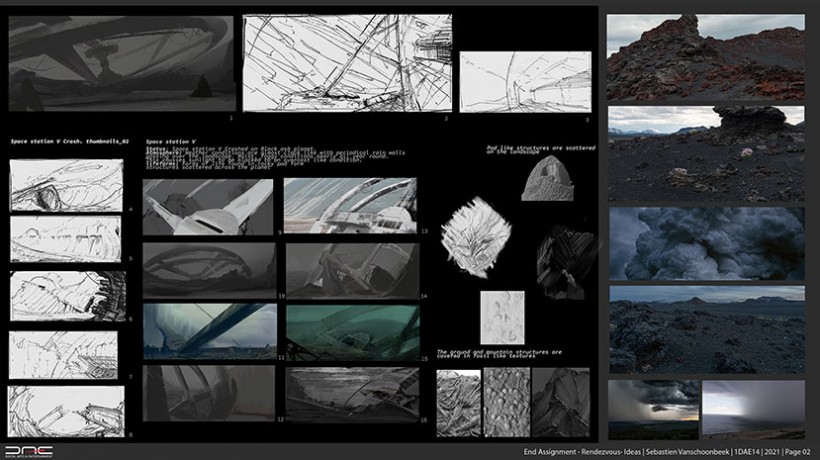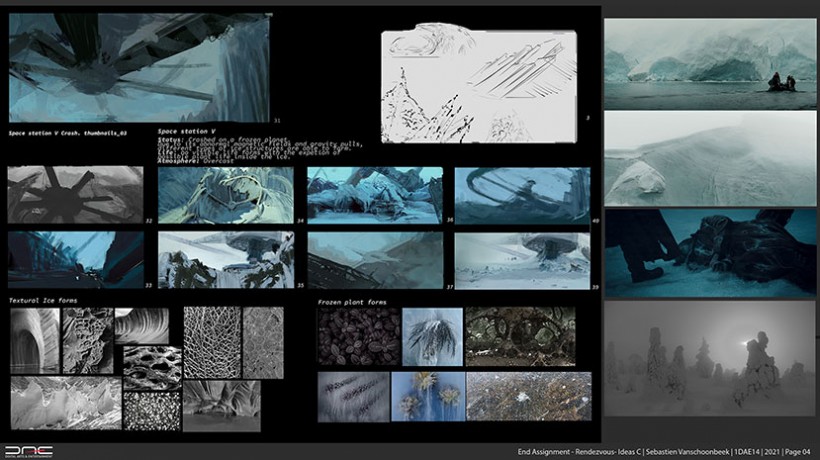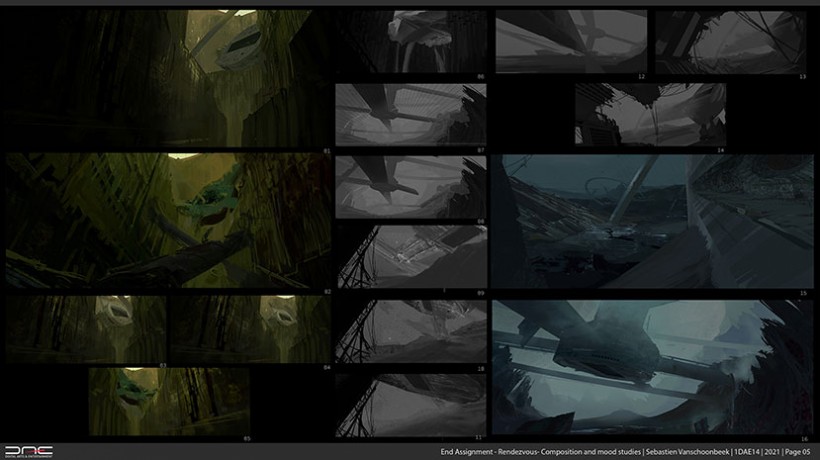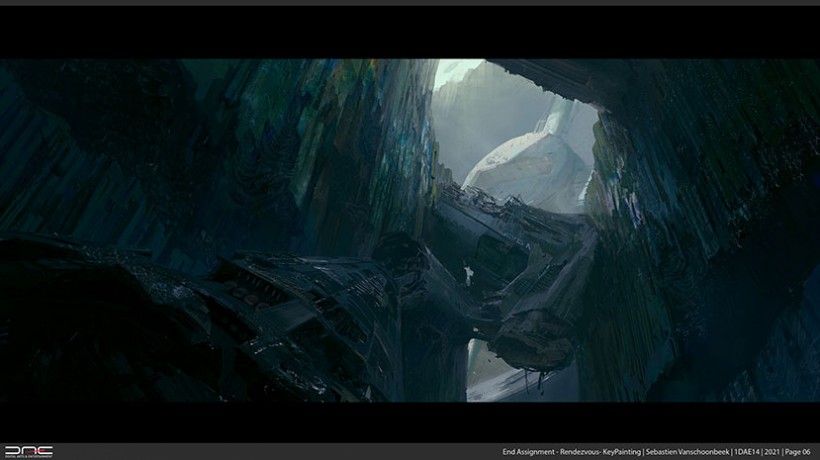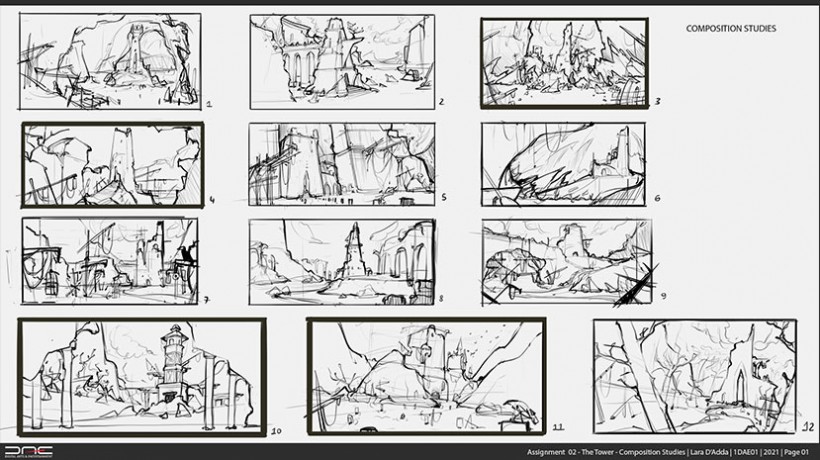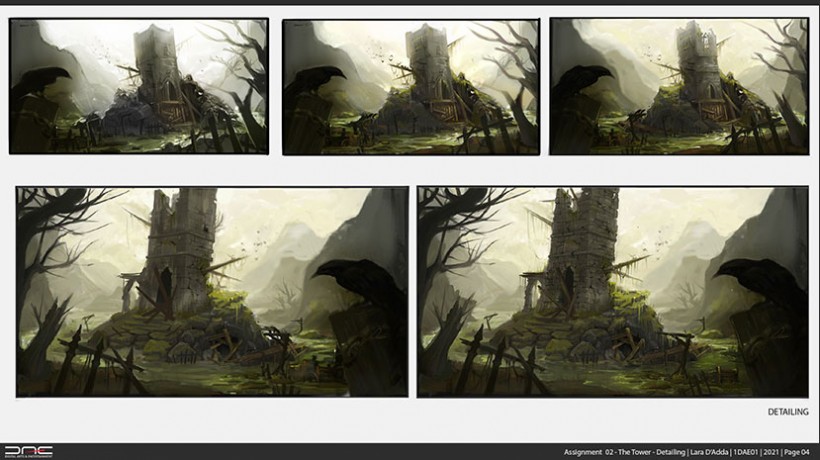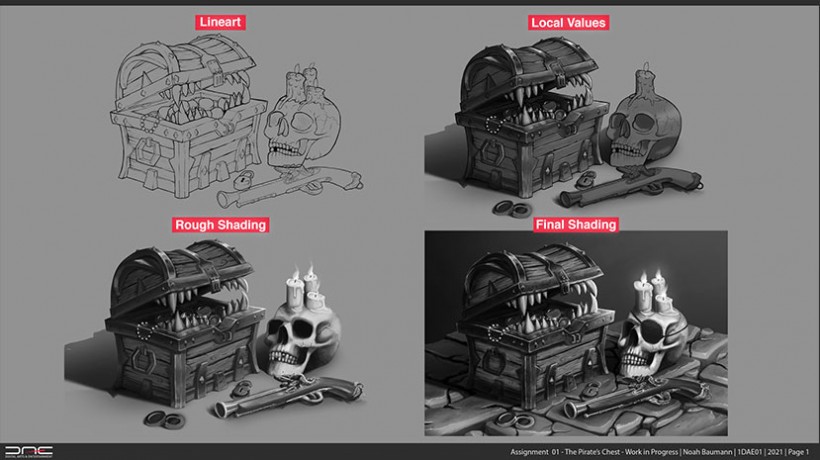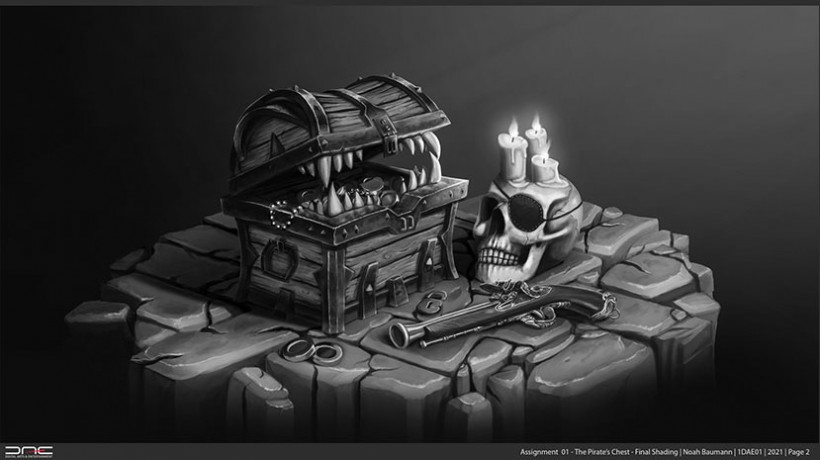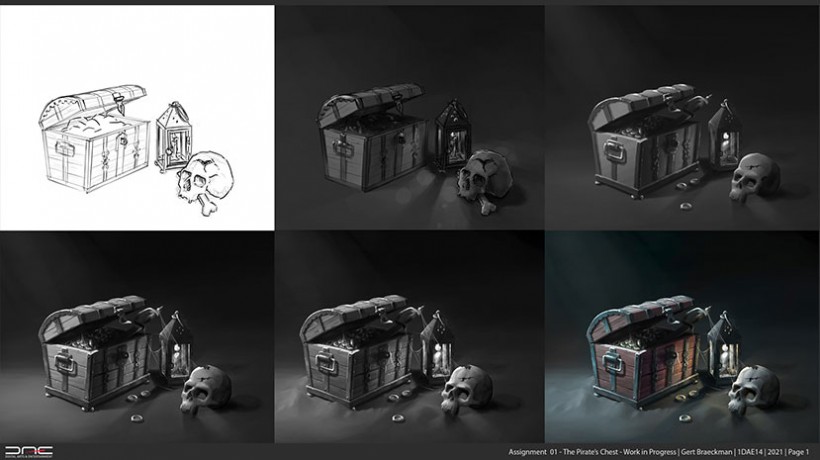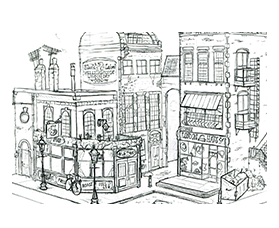Preproduction 2 continues on the knowledge acquired in the module Preproduction 1. The acquired skills and techniques will be refined and deepened. Students will extend their knowledge of perspective and digital shading in Adobe Photoshop.
Preproduction 2 focuses on composition, mood, colour and materials. The students will use their knowledge of textures, materials and presentation to create realistic looking production sheets.
Both analogue and digital tools will be used to create new work that is creative, technically strong and innovative.
The contents of this module:
- Draw complex forms in perspective
- Develop the techniques to create clear and easy to read composition thumbnails
- Develop the techniques of observational drawing
- Develop the techniques of digital shading
- Create a clear and realistic production sheet
Technologies used:
- Adobe Photoshop
- Wacom Intuos Pro Medium (minimum)


